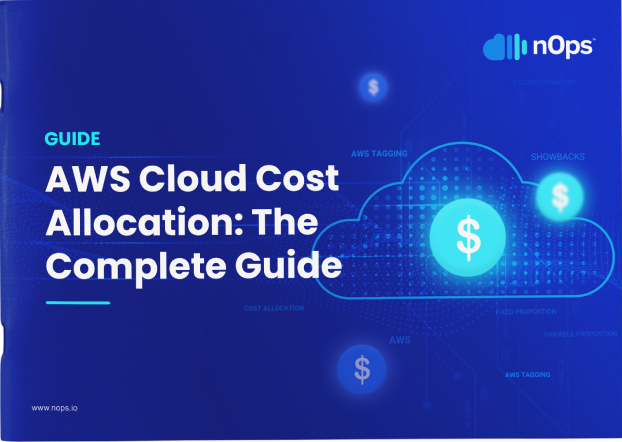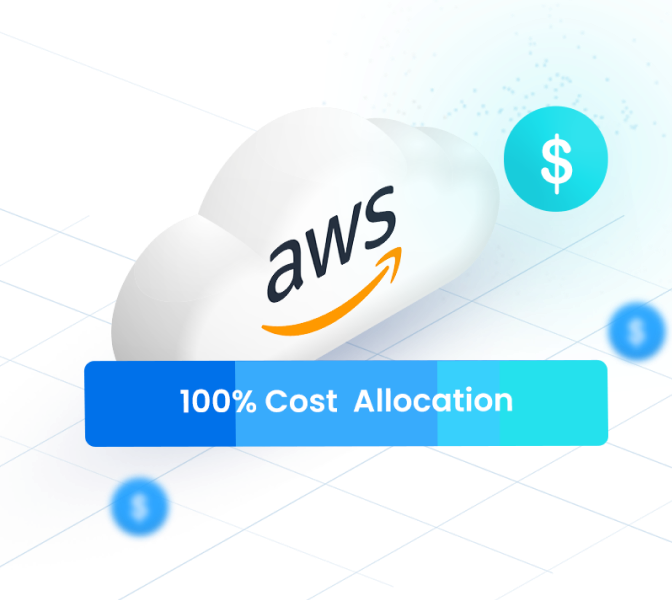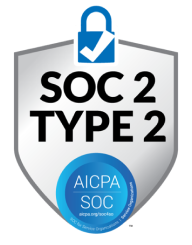According to a report by Flexera, 73% of enterprises have exceeded their cloud budget at least once, and over 33% have exceeded their budget by more than 10%. Another report found that over 35% of cloud spending is wasted due to idle or unused resources.
Cloud cost allocation can be a vital link between cloud spend and business value. As people in the organization become more aware of their actions and how they affect cloud spending, it will lead to more awareness and a leaner culture. AWS cloud cost allocation can also accurately predict future spending, enable forecasting and increase profits.
Let’s take a look at everything you should know about cloud cost allocation:
What Is Cloud Cost Allocation?
Cloud cost allocation is the process of analyzing, aggregating, and carefully allocating cloud spend across different departments and business units. So instead of allocating cloud spend to the services you may be using, you allocate it according to the usage of different departments.
Better visibility into your organization’s cloud spend can improve accountability and help you understand where you are spending the most money. Most importantly, it makes business units accountable and answerable for their own cloud usage.
What Are The Benefits Of Cloud Cost Allocation?
Implementing cost allocation can have several benefits for your organization, including:
Improved accountability: Cost allocation involves adopting chargeback or showback models where business units are either charged or shown their cloud usage and the associated costs. When every business unit becomes aware of its own consumption, they become more responsible and accountable. It also boosts cost awareness and financial responsibility.
Granular reporting: Cloud bills can be extremely difficult to interpret and understand. It’s really easy to go down the complex rabbit hole. Exhaustive cost allocation tagging can tell you which departments are spending the most money and allow you to create granular reports for greater visibility into cloud spending.
Financial transparency: You can better understand how much cloud costs are generated by each business unit, department or project. Cost allocation reports can help determine the true costs of running the applications and services.
Decreased cloud costs: When you know exactly how much each department, project, resource, and business unit is spending on cloud usage, you can better optimize your cloud costs by creating a budget that perfectly aligns with your cloud requirements.
Better decision-making: Cost allocation reports can help companies improve cloud investment strategies. Organizations can make more informed decisions about which resources should be allocated to which departments and how much budget each department should get.
Resource optimization: Identifying underutilized/ idle resources and optimizing their usage effectively becomes easier. You can reallocate underutilized resources to areas with a higher demand to further reduce cloud costs.
AWS Cloud Cost Allocation: The Complete Guide

Understanding AWS Cost Allocation Tags
Cost allocation tags are labels that can be assigned to any AWS resource. The tags can then be used for creating in-depth AWS cost usage reports–chargeback or showback.
Each cost allocation tag has a key and a unique value associated with it.
Image Source: Amazon Web Services
There are two types of cost allocation tags that can help you categorize and track AWS costs:
- AWS-Generated Tags
AWS-generated tags are automatically created and managed by AWS, and these tags are available only in the Billing Console. These are ‘createdBy’ tags that track who created a particular resource. These tags don’t count toward your total quota.
- User-Defined Tags
User-defined tags can be created, modified, and applied to AWS resources by users. These cost allocation tags start appearing in the AWS console after enabling Budgets, Cost Explorer, and AWS Cost and Usage Reports (CURs). These tags are not automatically applied to resources created before the tags themselves were created. They also count towards your total quota.
AWS Tag Editor can be used to create and modify user-defined tags, and AWS Management Console can be used to tag resources.
Once you have your resources appropriately tagged, you can then use them to create an exhaustive AWS Cost and Usage Report (CUR) for breaking down AWS costs.
For every report, you will find tags in each column and costs in the respective rows which can help you further drill down resource usage.
Also, note that cost allocation reports are generated as a CSV file, and they are usually very lengthy and complex, with thousands of rows in them. You may have to use a third-party tool to make sense of all the data.
You can explore the details about AWS tags and CUR at Understanding Chargeback Tagging And The Best Practices!
Approaches To Allocate Cloud Cost – Showback And Chargeback!
Showback
Showback is a cloud cost allocation strategy where the total cost of cloud usage by a particular business unit is shared with the unit so they can review how they have been using cloud resources.
Showback focuses on increasing visibility into cloud spending and usage. Compared to its counterpart, chargeback, showbacks are more palatable for internal teams. They can also be better for reducing friction between IT and business units.
A document similar to a billing statement is shared with the department to show the cost of their departmental usage. But the department isn’t actually required to pay for it.
Some of the many benefits of showback include:
- Increased visibility and awareness about cloud spending
- Encourages people to make changes in their resource usage to cut down costs further
- Allows organizations to compare different vendor solutions with actual department needs
- Improves transparency across the organization
- No extra accounting processes are required for the implementation
Chargeback
Chargeback involves billing each department for their resource usage. The goal of the chargeback is to create more accountability and ensure all the departments stick to a budget.
When chargebacks occur, departments get an invoice that must be paid based on the budget. While chargebacks can be paid with real money, most organizations maintain a ledger where the usage costs get deducted from the remaining department budget.
But chargebacks can easily be controversial since you essentially charge departments directly.
Here are some of the disadvantages of using IT chargebacks
- Creates conflict and tension among departments
- Requires business units to perform financial tasks on an ongoing basis, which isn’t their expertise or responsibility
- Complications can arise as chargebacks have to be integrated with existing financial processes.
- High risk of failure due to resistance
Showbacks are the safest cost allocation strategy. They can make teams more aware of their cloud usage and associated costs without causing any conflicts. Since no accounting processes are involved, showbacks are easier to implement and can increase visibility across the organization.
Learn more about the difference between chargeback and showback.
What Are The Challenges Of AWS Cost Allocation?
Here are the top challenges associated with AWS cost allocation:
Tag creation can be time-consuming: Your cost allocation strategy can only be as effective as your tagging policy and structure. If your tags aren’t placed correctly, there is no way you can get accurate cost allocation reports. Moreover, cost allocation tags need to be applied to resources at the time of creation. Establishing a tagging policy and adding tags can be incredibly time-consuming and complex.
Confusing resource ownership: It can be difficult to determine how departments use shared resources. Without clear ownership policies for shared resources, you may be unable to assign the right costs to the appropriate departments.
Exhaustive cost allocation reports: While cost allocation reports may sound like a good idea in principle, it can be extremely difficult to make sense of these lengthy CSV files. In fact, it’s impossible to analyze rows of data without using a third-party reporting tool or spending hours filtering out the data.
nOps Business Contexts: A Better Alternative To AWS Cloud Cost Allocation!
If you have been struggling to keep your AWS costs down, adopting a cost allocation strategy can help decrease costs and create a culture of accountability across the organization.
This is where nOps enters!
nOps Business Contexts can streamline the entire tagging process and help circumvent the many challenges of cost allocation. With nOps, you get access to a centralized platform for managing your AWS infrastructure and monitoring all AWS resources. It allows users access to many years of past cloud billing data in an interactive and visual environment instead of having to deal with thousands of rows of data.
Business Context can handle tag misconfiguration and inconsistent tagging, all the while eliminating the risk of manual errors.
nOps also goes a step further and helps you deal with undefined resources by establishing tagging rules based on regions, accounts, services, departments, and usage types. These rules are then used to attach expenses to a particular showback value.
You can create in-depth and easy-to-understand showback reports with nOps, which can then be quickly shared with different stakeholders.
Let us help you save! Sign up for nOps today.
.png?width=1920&height=1080&name=Landscape%20(4).png)









